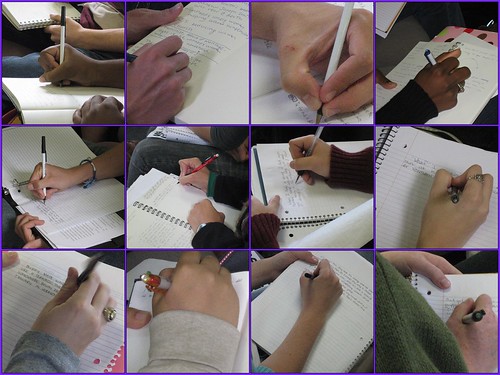"Multilingual Writers"
Multilingual writers constitute a large and growing segment of CSUN's student population. The term includes not only international students (many of whom have a language other than English as their primary language) but also domestic (U.S.) students who frequently know multiple languages. This collection of resources offers some starting points for faculty and staff as they work to support student success for multilingual writers at CSUN.
Events and Initiatives
Join us. We are working on a variety of events and initiatives.
What You Can Do Right Now
If you have multilingual writers in your classes (and most of us do), here are suggestions to help them and all of your students succeed. Thanks to Sharon Klein (English/Linguistics) and Iswari Pandey (English) for contributing most of these ideas.
- Ask (require) students to keep glossaries as they complete assigned reading. Consider asking them to contribute entries to a whole-class glossary (on Moodle) or even a glossary blog.
- Teach writing and grammar "on the run": instead of saving up all the issues you want to address for one whole class session, set aside a few minutes during several sessions, and focus on one or two things each time.
- Explain key concepts and cultural references slowly and carefully. The specialized language of your discipline is almost certainly "foreign" to all of your students, including those who are fluent speakers and writers of English.
- When you assign writing, discuss the rhetoric of academic writing. Be explicit about audience, purpose, occasion, task, and style as they pertain to each individual writing assignment you give.
- Provide strategic feedback (written comments that prioritize which areas students should work on), and follow through to make sure students understand your feedback.
- Pair a struggling writer with a more proficient one (native or non-native English users) for group work. Monitor their progress; make sure that group work is productive. More generally: get students to help one another when you can.
- Engage students in translation exercises: focus on challenging sentences and paragraphs, especially those including idioms and metaphors. Let students work individually and in groups (or even in groups by language).
- Lead students in an exercise decoding sentences that contain transitional words/expressions (such as "moreover," "nonetheless," "therefore," "since," "while," and "on the other hand").
- Remember that the writing challenges of multilingual writers, while readily visible, are often just one part of the context. Your students may be negotiating their way into American culture (as well as the culture of the university)--and they are almost certainly facing a challenge shared with their monolingual peers: reading. Reading matters. You might feel that you can't teach writing; but you can teach students how to read materials in your discipline. And you can also encourage students to read for pleasure--and to copy over, by hand, a daily sentence or paragraph they especially like. Doing so may help them develop their grasp of the rhythm and syntax of English. See Reading Matters for more information.


